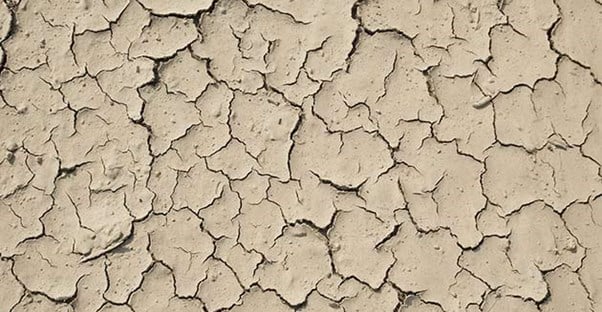Dry, Scaly Skin
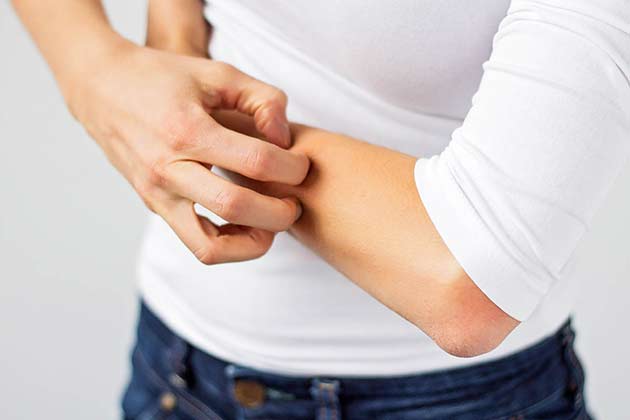
This is the most common symptom of eczema, no matter which type you have. Chronic dryness is a curse those who suffer from eczema are all too familiar with, and it can be harder than simply using more lotion to fix.
The scaly, patchy flakes that show up on your skin are itchy and embarrassing, but not all hope is lost. You might need a heavy-duty ointment for relief, but avoiding drying soaps and irritants can go a long way in preventing dryness.
Cracks Behind The Ears
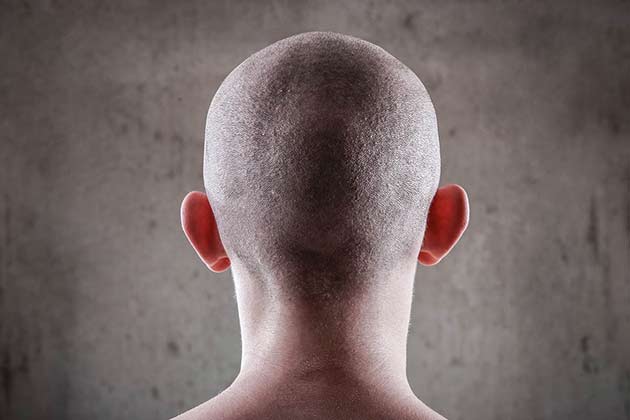
This unusual symptom can be hard to spot because it’s on your ears. You’ll notice the telltale itching and burning from the tender skin on your ears getting irritated and dried out. This can be hard to avoid considering all the different soaps, fragrances, and materials your ears touch on a daily basis.
Make sure to use sunscreen to avoid dryness and damage from UV rays. You should also remember to be gentle with the skin on your ears and avoid scratching it all costs—you don’t want your ears to bleed!
Open, Crusty Sores

Unfortunately, eczema can leave someone in a lot of pain and with a potential for infection. During a flare-up, which is when symptoms get worse, sores may appear that get crusty and oozy.
Luckily, these sores usually only happen during flare-ups, but they can be incredibly painful and lead to other health problems. Keep these sores clean and covered to prevent infection and speed up the healing process.
Burning

If you’ve ever had chapped skin then you know how bad it can burn. Eczema can leave your skin sensitive, irritated, and cracked. This leads to a burning sensation that sometimes just won’t go away until the affected spot gets better.
Try cool rags or lotion to soothe the skin, and take an anti-inflammatory to help with swelling. If the burning feeling doesn’t get better or go away when your other symptoms do, consult a doctor to make sure everything is okay.
Swelling
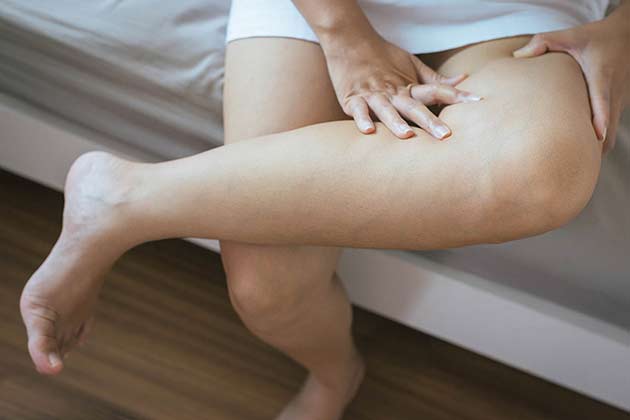
Eczema is a chronic inflammatory condition, so swelling is to be expected. What makes this symptom unusual is the fact that it can happen anywhere on your body, even if other symptoms aren’t present. Your skin might not be cracked and oozing, but swelling can still happen.
Unfortunately, eczema and inflammation go hand-in-hand so your best bet is to try and make yourself comfortable. Use ice packs or cool rags to soothe your skin, and take an anti-inflammatory to help with the swelling.
Blisters
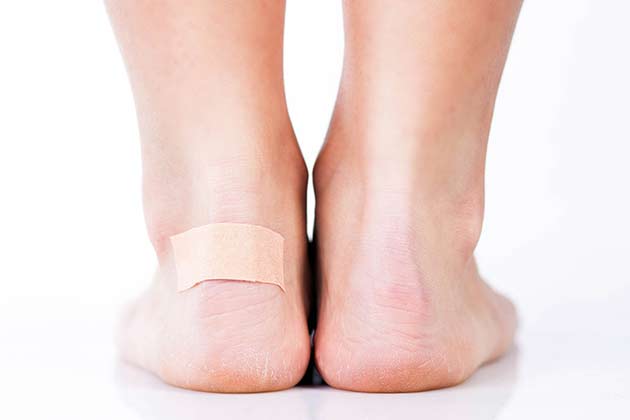
Eczema doesn’t always cause blisters, but it’s certainly not unheard of. They can be painful and leave you open to a risk of infection, but there’s no reason to freak out if you take care of the wounds properly.
Blisters can happen for a variety of reasons, the most common of which are allergies and stress. Lotion, ice packs, and petroleum jelly are good home remedies for a blister flare-up but you need to treat the cause, too. Talk to your doctor about potential allergy treatments and stress management techniques to help with this condition.
Pain

The main symptom of eczema is an itchy rash, but sometimes that can be accompanied by pain. When your skin gets dry, flaky, and irritated, scratching at it can cause it to get even more irritated or even bleed. Pain isn’t normal, but it can happen.
If you’re experiencing pain due to your eczema then you might find that ice packs, a cool shower, an oatmeal bath, or anti-inflammatory medication can help. If the pain doesn’t go away or gets worse, talk to your doctor as soon as possible.
Hives

Hives can be a scary thing to see, especially if you’re not used to having this symptom. This painful, unsightly rash can be caused by a reaction to irritants like soap, certain materials, or even perfumes. Try your best not to scratch hives because this can make the condition worse.
A cold rag or ice pack will help soothe any discomfort you might feel from hives, but you might need to make an appointment with your doctor. If your hives are caused by allergies or other outside factors, a doctor might be able to help.
Small, Itchy Blisters On The Feet and Hands
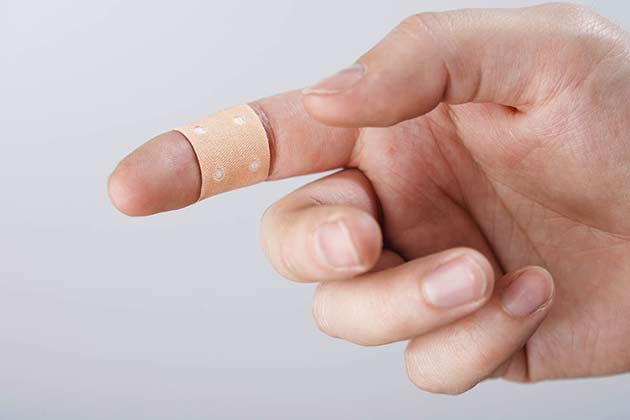
Blistering because of eczema isn’t unheard of, but it’s even stranger when tiny, itchy blisters start to pop up on the palms of your hands and the soles of your feet. This is a symptom of dyshidrotic eczema, which is like regular eczema but with the small blisters.
Stress is the biggest cause of these annoying little bumps, but allergies and moisture can also trigger them. Unfortunately, you have to manage the causes of the blisters to make them go away. Keeping your hands and feet clean can help, but the small blisters will just keep coming back if you don’t treat the root of the problem.
Thick, Leathery Skin
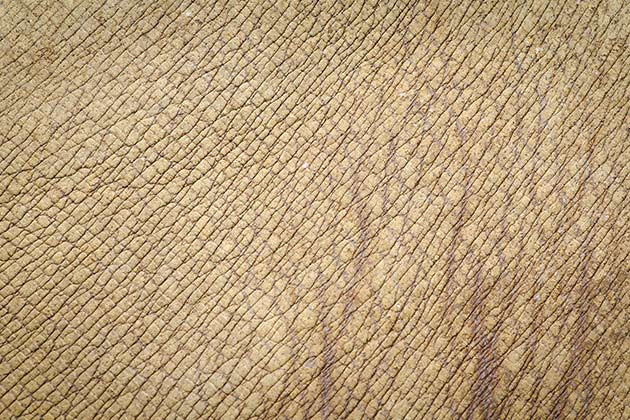
Eczema can also change the way your skin feels, not just the way it looks. You might notice your skin getting thicker and taking on a leathery feel. This is uncommon, but not unheard of. The type of eczema responsible for this is called neurodermatitis.
Neurodermatitis is like regular eczema, except it makes your skin get thick and scaly. It can happen anywhere on your body and can get easily infected if you scratch them. The worst part of this symptom is that the itching gets a lot worse when you're relaxed or asleep.
Large Rash
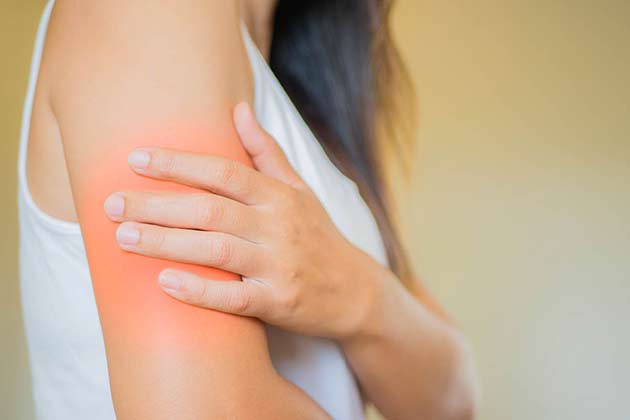
You already know that one of the common symptoms of eczema is an itchy rash. This rash is usually focused on the elbows, knees, scalp, or other areas. However, it can also get much worse.
When you’re having a flare-up or a bad reaction, a huge rash can break out. This rash can cover large areas of your body at one time and be intensely itchy and painful. If this happens, it’s best to contact your doctor, take some anti-inflammatory medicine, and use an ice pack.
Round, Coin-Shaped Spots
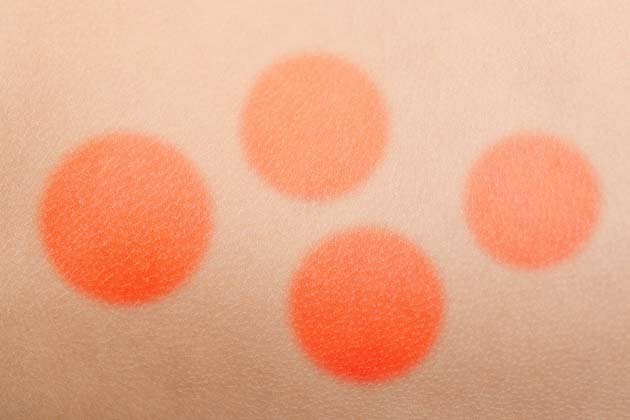
This is one of the more rare symptoms of eczema that can occur. Round, coin-shaped spots are associated with nummular eczema, which is more difficult to treat. Instead of a red, itchy rash, you get the big welts.
The spots can be very itchy and painful and are often triggered by things like insect bites, dry skin, or irritation. These spots can become wet, open sores and leave you at risk of infection. Be sure to keep these spots clean and communicate with your doctor about controlling your eczema.
Dandruff
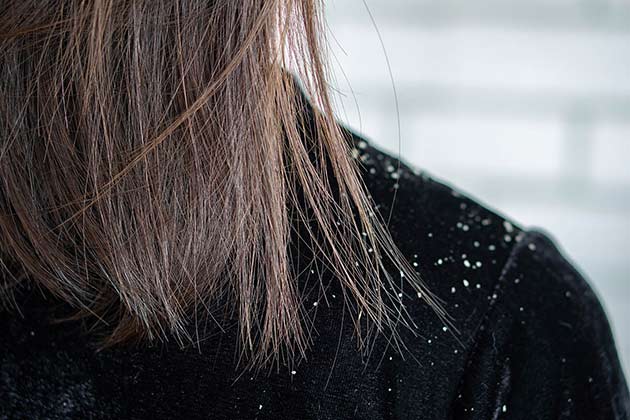
Unfortunately, eczema can cause dandruff, too. It’s not very common, but it’s also not unheard of. Usually, dandruff associated with eczema happens when you have seborrheic dermatitis. This is a chronic form of eczema instead of being the result of an allergy.
Dandruff is also a mild symptom of seborrheic dermatitis. If it gets worse, the flakes can turn into hard, yellow scales. This is a lot harder to treat, but a good moisturizing shampoo will help. Make sure you discuss treatment options with your doctor.
Greasy Skin
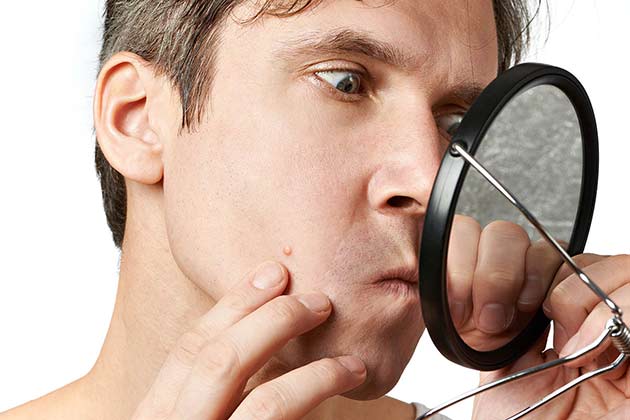
You might not expect greasy skin to be a symptom of eczema since you usually get dry, itchy skin. This is another symptom of seborrheic dermatitis, just like with dandruff. This type of eczema appears where there’s a lot of oil-producing glands like on your back, nose, and scalp.
The greasy skin can happen along with the typical red rash, scaly skin, and dandruff. So, you get greasy skin in addition to all the other eczema symptoms. Keeping clean and dry will be a big help with fighting off this symptom.
Swollen Ankles
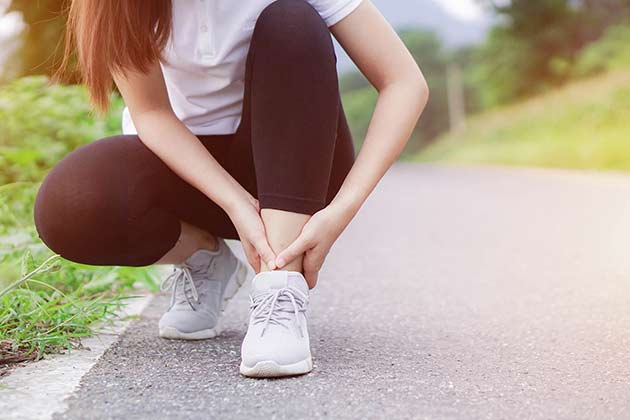
Who knew a skin condition could cause your ankles to swell? This happens when you have stasis dermatitis, a type of eczema that is especially affected by gravity. In other words, when you have an issue with circulation in your legs, you can develop this type of eczema.
When your blood flow is impeded, pressure starts building up over time. This pressure can cause fluid to leak out of your veins and into the skin, which results in the swelling and redness. There’s not a great treatment for this condition other than exercise and wearing socks that help with circulation.
Large Areas Of Cracked Skin

Stasis dermatitis is one of the more gnarly forms of eczema you can get, just because of the unusual and painful symptoms. This type of eczema can cause excessive swelling because of poor circulation, leading to a variety of other health problems.
For example, if the swelling gets too severe then your skin can crack open and form large ulcers. Obviously, your skin cracking apart is painful, but it also opens you up to a big risk of infection. If you experience any of these painful symptoms, go see a doctor for treatment.
Itching Under the Skin
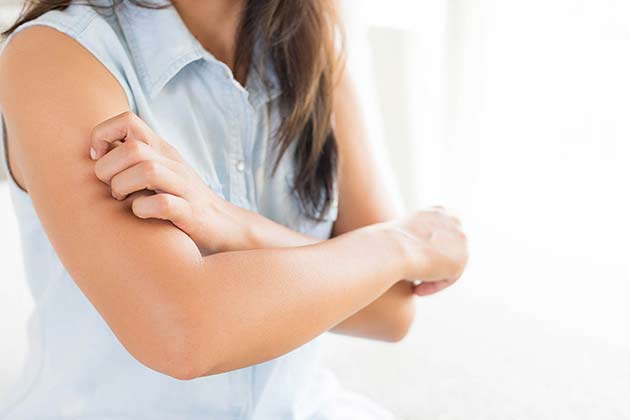
Itching is the single most common symptom of eczema. The dry skin and rashes only contribute to this, but did you know you could also experience an intense itchy feeling beneath the skin? Stasis dermatitis is responsible for this crazy symptom, too.
This happens when the pressure builds up because of bad circulation and your skin starts to crack. Fluid leaks out of your veins and gets trapped under the skin, which can also make you want to scratch off your skin. Anti-inflammatory medicine and a cold rag can help, but a doctor should be able to help with a long-term solution for your circulation issues.
Varicose Veins

Here is yet another crazy symptom of eczema that we can blame on stasis dermatitis. Varicose veins are enlarged, twisted veins that you can usually see underneath the skin. They might itch, but that should be about it.
These veins pop up because of poor circulation, which is a hallmark trait of those who have stasis dermatitis. Varicose veins aren’t easy to treat and it’s usually treated as a cosmetic issue, but you can talk to your doctor about reducing their appearance if you’re worried about it.
Yellowed Skin
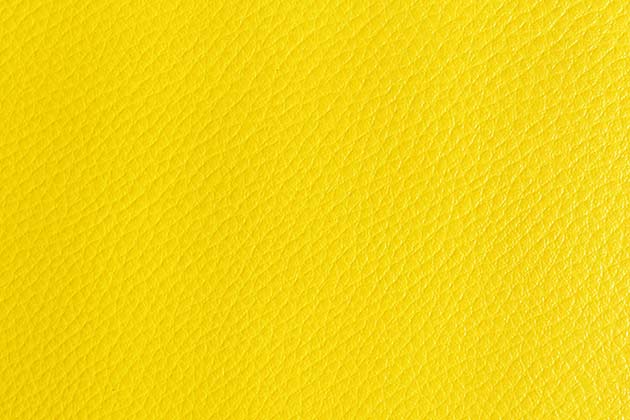
Skin discoloration isn’t unusual with eczema, but skin turning yellow is. Usually, your skin just gets red from being irritated and swollen, but it can also turn yellow if things get more serious. This symptom is usually associated with seborrheic dermatitis, which also causes dandruff.
The skin will sometimes turn yellow when excessive dryness leads to your skin producing way too much oil. This leads to yellow, greasy scales on top of thick, red skin. Keeping clean and dry can help with this, but the underlying issue can sometimes be a lot harder to treat.
Infected Skin

The worst thing that can happen with your eczema is an infection. This can happen with any type of eczema if you’re not taking care of yourself and your skin. Even with mild eczema, excessive scratching can lead to infection, so it's always important to keep everything clean and covered.
If you have blisters, hives, scales, open sores, cracked skin, or even just a rash, you’re at risk of infection. It’s important to keep your skin clean and dry to avoid any problems, but anything can happen. Please contact your doctor if you have an infection or are worried about getting one.

